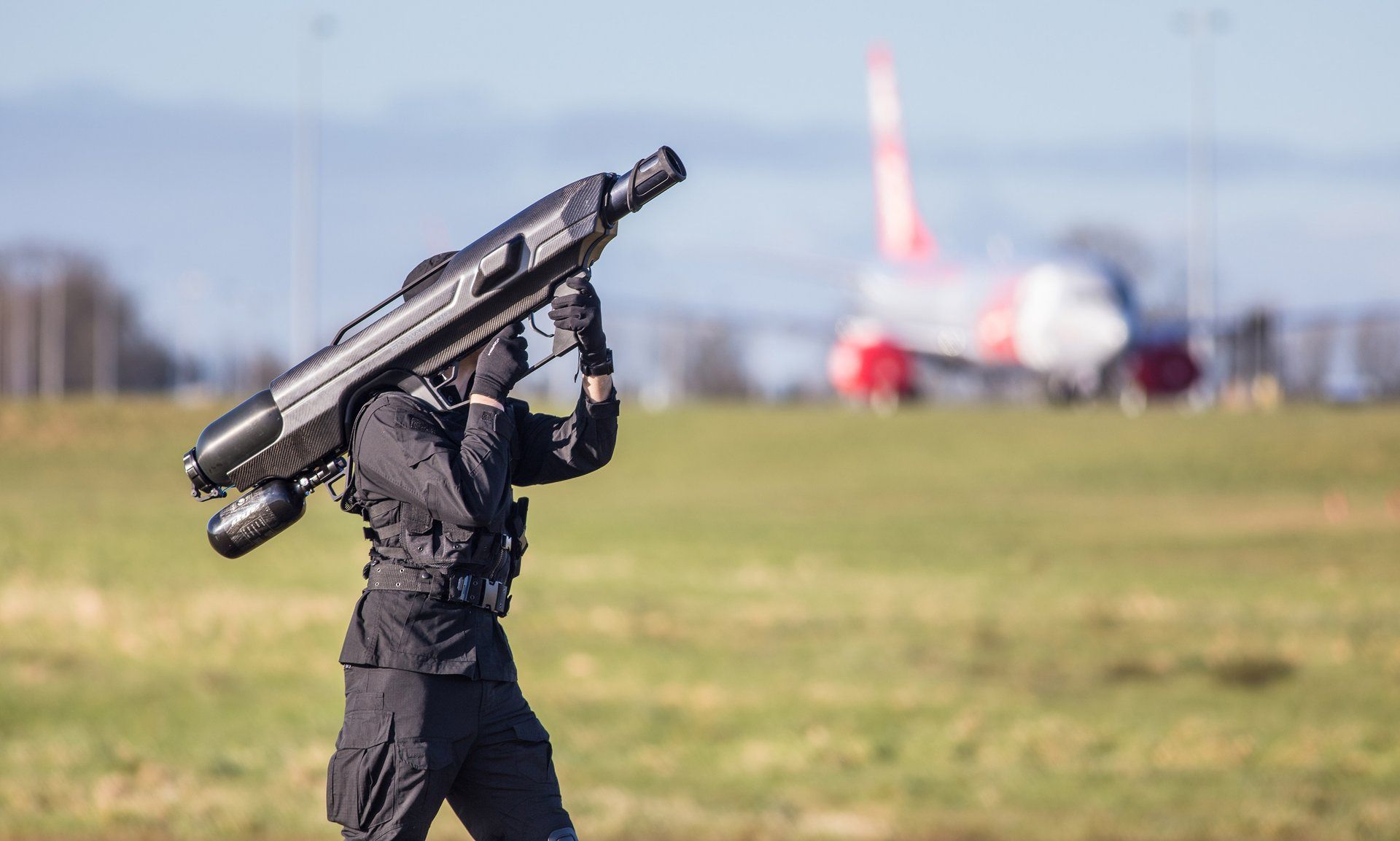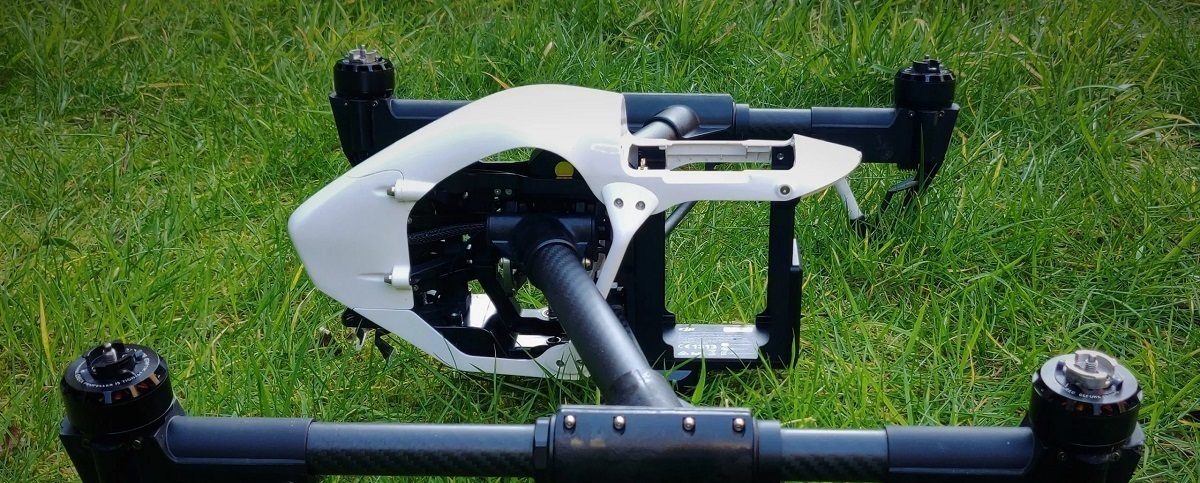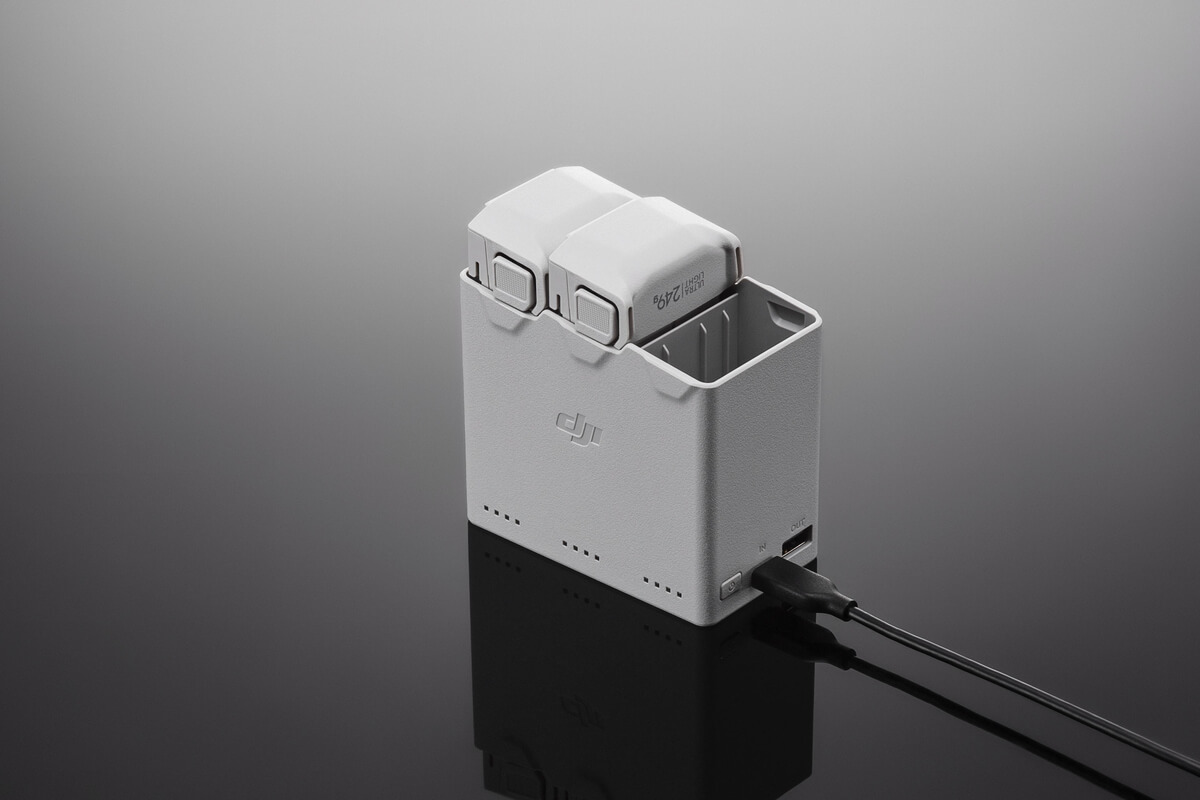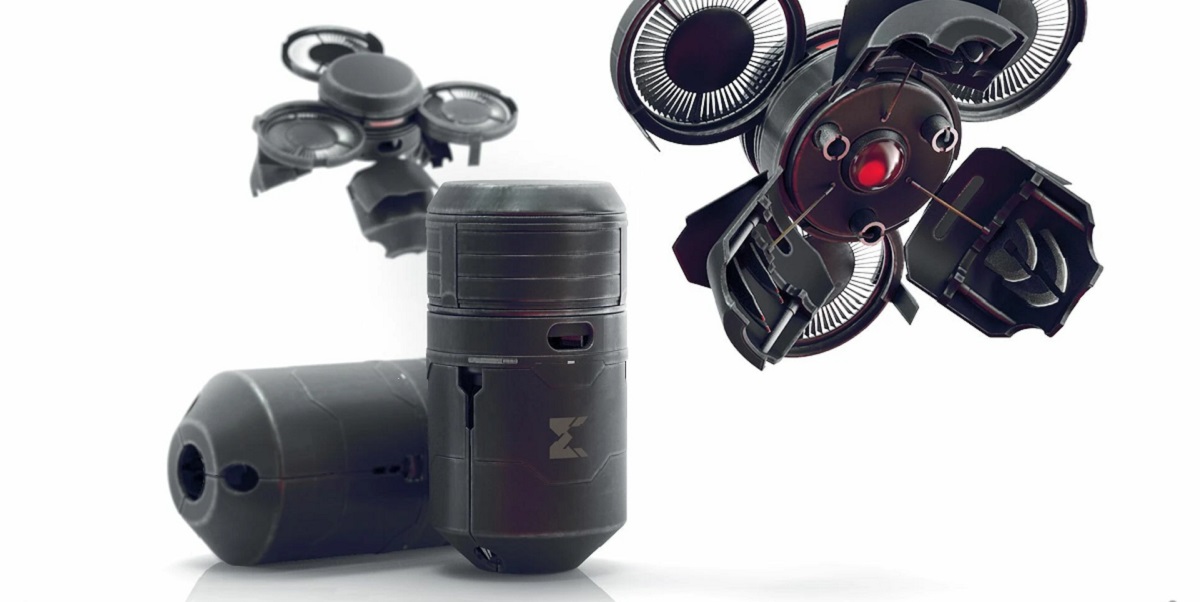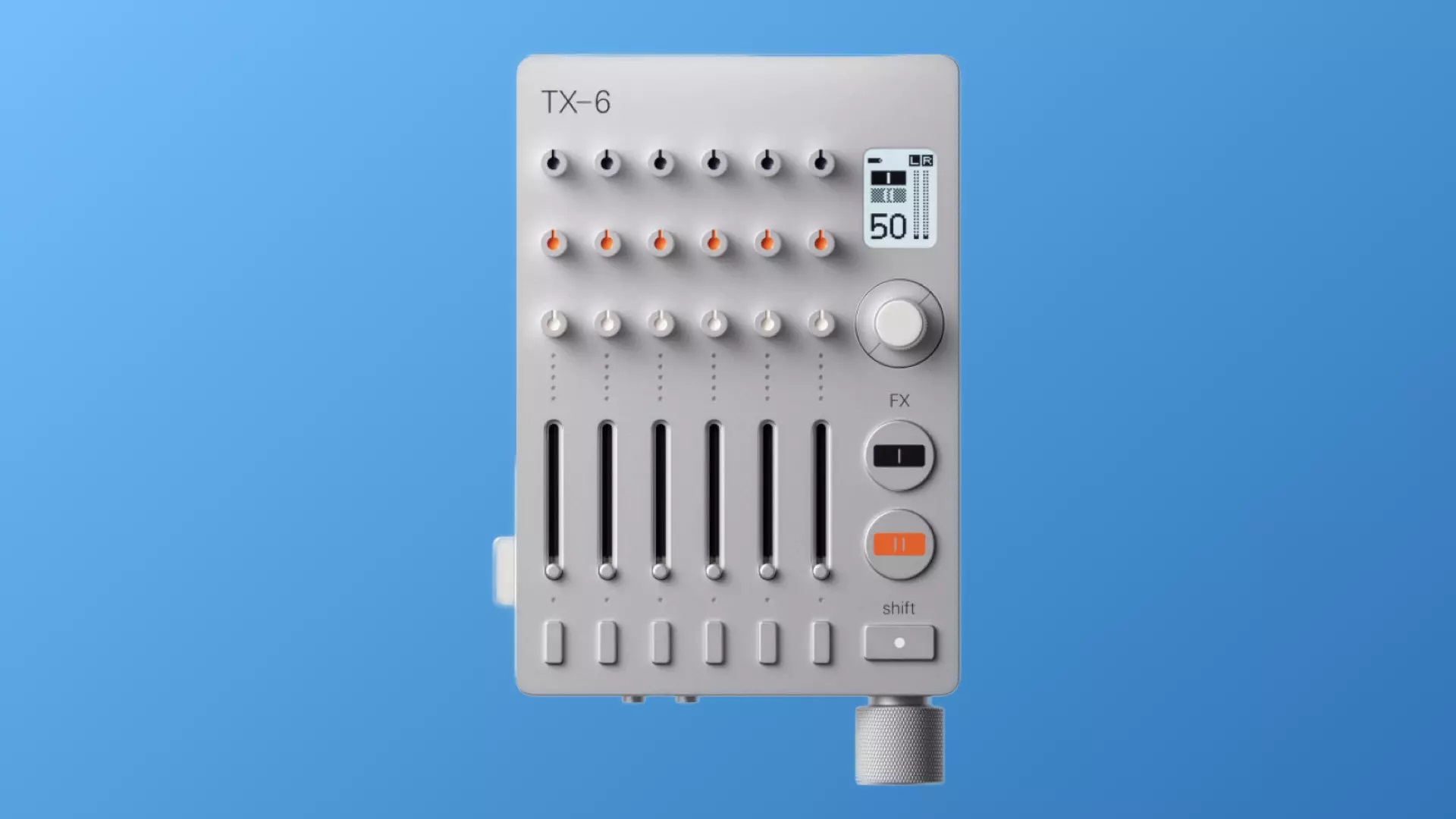Introduction
Aerial drones have become increasingly popular in recent years, with applications ranging from aerial photography and surveillance to recreational use. However, there are situations where unauthorized drone flights can pose threats to safety, privacy, or security. In such cases, it might be necessary to take measures to knock down or disable a rogue drone.
Knocking down a drone, also known as drone interception or counter-drone measures, requires careful planning and consideration. It is essential to understand the technology and capabilities of drones, as well as the legal and ethical implications of taking action against them.
In this article, we will explore the various methods and countermeasures that can be employed to safely and effectively knock down a drone. Before diving into the specific techniques, it is crucial to gather information about the drone, evaluate potential threats, and choose the most appropriate countermeasure.
Understanding the capabilities and limitations of drones is crucial in formulating a successful interception strategy. Drones typically utilize a combination of manual and automated controls, allowing them to fly autonomously or be remotely controlled. They vary in size, speed, and payload capacity, and can be equipped with various sensors, cameras, or even weapons.
Gathering information about the drone in question is essential to assess its capabilities and potential risks. This can be done through visual observation, searching for any identifying markings or logos, or by using specialized equipment to intercept and analyze the drone’s communication signals.
Once the necessary information is obtained, it is important to select the most appropriate countermeasure. Physical interception methods involve physically disabling the drone in flight, while electronic countermeasures disrupt its communication or GPS capabilities. The choice depends on factors such as the drone’s altitude, proximity, and potential risks involved.
In the following sections, we will delve into the various countermeasures in more detail, exploring physical interception techniques, electronic disruption methods, and legal considerations. By understanding the available options, you can make informed decisions when dealing with unauthorized drone activity.
Understanding Drones
Drones, also known as unmanned aerial vehicles (UAVs), are aircraft that are operated without an onboard human pilot. They have gained significant popularity in recent years due to their ability to perform a wide range of tasks with ease and efficiency. Understanding the capabilities and limitations of drones is crucial when devising effective countermeasures.
There are different types of drones available in the market, varying in size, design, and functionality. Some drones are small and lightweight, designed for recreational purposes such as aerial photography or racing. Other drones are larger and more sophisticated, often used for professional applications like aerial surveys, crop monitoring, or delivery services.
One of the most crucial aspects of a drone is its control system. Drones can be controlled either remotely by a human operator or autonomously using pre-programmed flight paths or artificial intelligence. The remote control method allows real-time control and maneuverability, making it more challenging to intercept or disable the drone.
Drones are equipped with a variety of sensors, cameras, and imaging systems. These components allow them to capture high-quality photos and videos, carry out surveillance, collect data, and even perform specific tasks like thermal imaging or mapping. The versatility and advancements in drone technology make them useful in various industries.
It’s essential to consider the range and capabilities of the drone’s communication system. Drones typically use radio frequency (RF) signals to communicate with their operators or control systems. Understanding the frequency band and encryption methods used by the drone can help in developing effective countermeasures to interfere with or disrupt the drone’s communication.
Another crucial factor to keep in mind when dealing with drones is their flight characteristics. Drones can fly at different altitudes, ranging from a few feet above the ground to several thousand feet in the air. They can also achieve different speeds, depending on their design and purpose. Considering these factors is vital when determining the most suitable countermeasure for a particular drone.
Understanding the various components and capabilities of drones is necessary to devise effective countermeasures. By knowing the type, control system, sensor capabilities, communication methods, and flight characteristics of a drone, you can develop targeted strategies to intercept, disable, or neutralize the drone safely and efficiently.
Gathering Information
Before employing any countermeasures against a rogue drone, it is crucial to gather as much information as possible about the drone and its operator. This step helps determine the level of threat posed and enables the formulation of an appropriate response strategy.
Visual observation is often the starting point for gathering information about a drone. Look for any distinguishing features, markings, or logos on the drone’s body, as they may provide clues about its manufacturer or purpose. Take note of the drone’s size, design, and any attached equipment, such as cameras or sensors.
If possible, try to identify the operator or any associated individuals nearby. Observe their behavior and body language, as this can help gauge their intentions. However, it is essential to maintain a safe distance and not engage in confrontational or risky actions.
In addition to visual observation, communication monitoring can provide valuable insights into the drone’s operations. Specialized equipment can intercept and analyze the drone’s communication signals, such as radio frequencies or wireless protocols. By understanding the drone’s communication methods, including frequency bands, encryption, and transmission protocols, you can gain a deeper understanding of its capabilities and potentially identify vulnerabilities.
Online research is another valuable tool for gathering information about drones. Look for any publicly available information, forum discussions, or social media posts related to the specific drone model or its capabilities. Reviewing online platforms and communities that focus on drones can provide insights into best practices for drone interception and countermeasure techniques.
It is also important to consult local laws and regulations regarding drone operation in your area. Different countries and jurisdictions have varying regulations and restrictions on drone activities. Understanding these rules can help ensure that your actions against the drone are legal and within your rights.
By gathering information through visual observation, communication monitoring, online research, and understanding local regulations, you can enhance your understanding of the drone and its operator. This information will assist in determining the most suitable countermeasures, as well as establishing a clear plan of action to mitigate any risks or threats posed by the unauthorized drone flight.
Choosing the Right Countermeasure
When faced with a rogue drone, it is crucial to select the most appropriate countermeasure based on the specific situation and the potential risks involved. Various factors should be considered when choosing the right countermeasure, including the drone’s altitude, proximity, capabilities, and the desired outcome.
Physical interception is one method of neutralizing a drone. This involves physically disabling the drone in flight using various means. One option is to use trained birds of prey, such as falcons or eagles, which can be trained to intercept and bring down drones safely. Another option is to use specialized interceptor drones equipped with nets or projectiles that can capture or disable the rogue drone.
Electronic countermeasures can disrupt the drone’s communication or GPS capabilities, rendering it incapable of controlled flight. One method is by using signal jammers that emit strong radio frequency signals in the same frequency band used by the drone, effectively overpowering its signals and causing it to lose control or disconnect from its operator.
Disabling the drone’s communication is another effective countermeasure. This can be achieved by intercepting the drone’s communication signals and sending conflicting commands, confusing or disabling its control systems. By exploiting vulnerabilities in the drone’s communication protocols, it is possible to disrupt its functionality and render it immobile or uncontrollable.
Jamming the drone’s GPS is another option. Many drones rely on GPS signals to navigate and maintain steady flight. By using specialized GPS jammers, it is possible to disrupt the drone’s ability to accurately locate itself, causing it to lose its intended flight path or forcing it into a fail-safe mode.
Using technological solutions to disable the drone is also a viable countermeasure. For example, some drones have built-in safety features that initiate an automatic return-to-home or landing sequence when their control signal is lost. By interfering with the drone’s communication or control signals, it is possible to trigger these safety features and force the drone to land safely.
It is crucial to consider the legal implications when choosing a countermeasure. Different jurisdictions have varying regulations regarding the use of countermeasures against drones. Consulting local laws and seeking legal advice is essential to ensure that your actions are within the bounds of the law.
Choosing the right countermeasure requires a careful assessment of the specific circumstances, the drone’s capabilities, and the desired outcome. By considering factors such as altitude, proximity, capabilities, and legal considerations, you can devise an effective countermeasure strategy to safely neutralize the rogue drone.
Physical Interception
Physical interception is a method of disabling or neutralizing a rogue drone by physically intercepting it in flight. While it may seem like a straightforward approach, careful planning and consideration are necessary to execute physical interception effectively and safely.
One approach to physical interception is utilizing trained birds of prey, such as falcons or eagles, to intercept and bring down the drone. Birds have natural predatory instincts, sharp talons, and an ability to fly at high speeds, making them effective in neutralizing drones. Trained falconers or avian experts can guide the birds to intercept and disable the drone without causing harm to themselves or the bird.
An alternative method of physical interception involves using specialized interceptor drones. These interceptor drones are equipped with nets, cables, or projectiles designed to capture or disable the rogue drone. The interceptor drone can be remotely controlled and maneuvered to intercept the target drone, deploying its capture mechanism to neutralize the threat.
Another approach to physical interception is using physical obstacles to hinder or bring down the rogue drone. This can include using large nets or bungee cords strung across an area to trap the drone mid-flight. By strategically placing obstacles based on the drone’s flight path and speed, it is possible to physically intercept and disable the drone.
However, it is important to exercise caution when employing physical interception methods. Safety considerations should be paramount, not only for the drone pilot but also for bystanders and any animals involved. Physical interception requires careful planning, proper training, and adherence to local laws and regulations.
Additionally, it is crucial to assess the potential risks associated with physical interception. Depending on the altitude, speed, and weight of the drone, there is a possibility of damage or injury if the interception is not executed properly. Conducting a thorough risk assessment before deploying physical interception is essential to minimize any unintended consequences.
Physical interception may not be suitable for all situations, especially if the drone is flying at a high altitude or in a densely populated area. In such cases, other countermeasures, such as electronic disruption or disabling the drone’s communication, may be more appropriate. It is essential to evaluate the specific circumstances and risks before deciding on the most suitable countermeasure.
While physical interception can be an effective method of neutralizing a rogue drone, it requires careful planning, consideration of safety measures, and adherence to legal regulations. By utilizing trained birds of prey, specialized interceptor drones, or physical obstacles, it is possible to physically intercept and bring down a rogue drone safely and effectively.
Electronic Countermeasures
Electronic countermeasures are a set of techniques that disrupt a rogue drone’s communication or GPS capabilities, rendering it ineffective or uncontrollable. These countermeasures rely on interfering with the electronic systems of the drone to neutralize the threat.
One commonly used electronic countermeasure is the use of signal jammers. Signal jammers emit strong radio frequency signals in the same frequency band used by the drone, effectively overpowering or disabling its communication signals. By disrupting the drone’s ability to receive or transmit signals, it becomes unable to communicate with its operator, causing it to lose control or enter a fail-safe mode.
Signal jammers are available in various sizes and power levels, giving users the ability to adjust the strength of the jamming signal as needed. It is important to note that the use of signal jammers may be regulated or restricted in some jurisdictions, so it is essential to consult local laws and regulations before employing this countermeasure.
In addition to signal jammers, exploiting vulnerabilities in the drone’s communication protocols can be an effective electronic countermeasure. By intercepting and analyzing the drone’s communication signals, it is possible to identify weaknesses or flaws that can be exploited to disrupt its functionality.
One method of exploiting such vulnerabilities is by sending conflicting commands to the drone. By overriding or hijacking its control signals, it is possible to confuse the drone’s control systems, causing it to lose control or enter an uncontrolled flight mode.
Disabling the drone’s communication system by introducing interference or noise into the signal can also be an effective electronic countermeasure. By transmitting a strong and disruptive signal within the drone’s operating frequency range, it becomes difficult for the drone to receive clear and coherent commands from its operator.
Another electronic countermeasure is jamming the drone’s GPS signal. Many drones rely on GPS signals to navigate and maintain stable flight. By using specialized GPS jammers, it is possible to disrupt the drone’s ability to accurately determine its position and follow its predetermined flight path.
It is important to note that the use of electronic countermeasures should be conducted with caution and within the boundaries of the law. Some jurisdictions classify the use of certain electronic countermeasures as illegal, and penalties may apply for unauthorized interference with radio frequencies or communication systems.
Electronic countermeasures can be an effective means of neutralizing a rogue drone by disrupting its communication or GPS capabilities. Signal jammers, exploitation of vulnerabilities, and GPS jamming are all viable options. However, it is crucial to be aware of local regulations and legal restrictions before employing electronic countermeasures.
Disabling the Drone’s Communication
Disabling the drone’s communication is a targeted electronic countermeasure that focuses on disrupting the drone’s ability to communicate with its operator or control systems. By interfering with the communication signals, it is possible to render the drone immobile or uncontrollable.
One method of disabling the drone’s communication is by intercepting and analyzing its communication signals. By understanding the specific frequency bands, encryption methods, and protocols used by the drone, it becomes possible to disrupt its communication channels. This can be achieved by sending conflicting commands or introducing interference into the communication signal.
The interception and manipulation of the drone’s communication signals can disrupt its control systems, causing it to lose connectivity with the operator or enter an uncontrolled flight mode. By exploiting vulnerabilities in the communication protocols, it is possible to confuse the drone’s control systems and prevent it from responding to commands.
The use of powerful transmitters or receivers capable of overriding the drone’s control signals is another method of disabling its communication. By transmitting a stronger and continuous signal within the drone’s operating frequency range, it becomes difficult for the drone to receive clear and coherent commands from its operator.
Interfering with the drone’s communication can also be accomplished by introducing noise or jamming signals into the communication frequency band. By broadcasting a strong and disruptive signal in the same frequency range as the drone’s communication, it becomes challenging for the drone to distinguish between the noise and the actual commands from its operator.
It is crucial to conduct the disabling of the drone’s communication within the bounds of the law. In many jurisdictions, interfering with radio frequencies or communication systems is restricted or prohibited. It is essential to consult local regulations and seek legal advice to ensure compliance with the law when deploying such countermeasures.
Disabling the drone’s communication is an effective countermeasure to neutralize a rogue drone. By intercepting and manipulating its communication signals, or introducing interference or jamming, it becomes possible to disrupt its control systems and render it immobile or uncontrollable. However, it is important to be mindful of legal restrictions and regulations regarding the use of such electronic countermeasures.
Jamming the Drone’s GPS
Jamming the drone’s GPS signal is an effective electronic countermeasure that disrupts the drone’s ability to accurately determine its position and follow its intended flight path. By interfering with the GPS signals, it becomes difficult for the drone to maintain stable flight or navigate as intended.
GPS jamming involves transmitting a strong and disruptive signal within the frequency range used by GPS satellites to communicate with receivers on the ground. This interference overpowers or blocks the GPS signals received by the drone, causing it to lose its ability to determine its position accurately.
The jamming signal creates a strong noise floor that prevents the drone’s GPS receiver from receiving the accurate timing and position information provided by the satellites. As a result, the drone becomes uncertain about its location and may struggle to maintain stable flight.
Jamming the drone’s GPS signal can force it into a failsafe mode or cause it to enter an automatic return-to-home sequence, depending on its programmed behavior. This can be beneficial in scenarios where the drone is operating in a restricted or sensitive area, as it can be directed to return to its designated take-off point safely.
It is crucial to note that jamming the GPS signal can have unintended consequences. Other GPS receivers in the vicinity, not just the drone’s, may also be affected by the jamming signal. This can impact GPS-based devices and services used by other individuals or systems. Understanding the potential collateral effects of GPS jamming is important in order to minimize any unintended disruptions.
Legal considerations are of utmost importance when considering the use of GPS jamming countermeasures. In many jurisdictions, the jamming of GPS signals is regulated and prohibited due to its potential impact on critical infrastructure, navigation systems, and emergency services. It is essential to familiarize yourself with local regulations and seek legal advice before employing such measures.
Jamming the drone’s GPS signal can be an effective countermeasure to disrupt its navigation and intended flight path. By interfering with the GPS signals, the drone may lose its accuracy and struggle to maintain stable flight. However, it is imperative to exercise caution, consider possible collateral effects, and comply with legal requirements when utilizing GPS jamming as a countermeasure against rogue drones.
Using Tech to Disable the Drone
Advancements in technology have provided innovative ways to disable rogue drones safely and effectively. By leveraging specialized equipment and software, it is possible to neutralize the threat posed by unauthorized drone activity.
One approach to disabling a drone is through the use of drone detection systems. These systems rely on sensors, such as radar, acoustic sensors, or thermal cameras, to detect the presence of drones in the vicinity. By accurately identifying the drone’s location, these systems can provide valuable information for implementing the appropriate countermeasures.
Once a drone is detected, it can be targeted by anti-drone systems equipped with various disabling technologies. One method is the use of directed energy weapons, including lasers or high-powered microwaves, to damage or disrupt the drone’s electronic systems. These systems can effectively disable drones at a distance without causing physical harm to the surrounding environment.
Another technological approach is the use of drone capture devices. These devices deploy nets, entangling the drone and preventing it from maintaining stable flight. The captured drone can then be safely retrieved and neutralized without causing damage or harm.
Software-based solutions can also be employed to disable drone activity. Cybersecurity tools can be utilized to intercept and analyze the drone’s communication signals, enabling the operator to gain control over the drone or disrupt its communication systems. By exploiting vulnerabilities and weaknesses in the drone’s software, it is possible to disable its functionality remotely.
Furthermore, drone mitigation technologies can leverage artificial intelligence and machine learning algorithms to detect and identify rogue drones. These systems continuously learn from patterns and behaviors to improve their detection accuracy over time. By identifying potential threats and implementing the appropriate countermeasures, they contribute to effective drone mitigation strategies.
It is important to note that the use of technology to disable drones should be conducted within the framework of legal and regulatory requirements. Depending on the jurisdiction, certain countermeasures may be prohibited or subject to restrictions. Compliance with applicable laws is crucial to ensure ethical and lawful use of disabling technologies.
Using technology to disable the drone provides advanced and efficient methods of countering unauthorized drone activity. Whether through drone detection systems, directed energy weapons, capture devices, software-based solutions, or AI-driven mitigation technologies, these tech-based approaches contribute to safe and effective neutralization of rogue drones.
Legal Considerations
When dealing with unauthorized drone activities and employing countermeasures, it is crucial to consider the legal implications and adhere to applicable laws and regulations. Understanding the legal considerations ensures that actions taken are within the framework of the law and helps prevent any legal consequences.
The use of countermeasures against drones may be subject to specific regulations, varying from country to country and even within different jurisdictions. It is essential to research and familiarize yourself with the local laws governing the operation and mitigation of drone activities.
Some jurisdictions have specific regulations addressing the use of countermeasures against drones. These regulations outline the permissible actions one can take and may require certain authorizations or licenses to use certain countermeasures. Failure to comply with these regulations can lead to legal complications and potential liabilities.
Privacy laws also come into play when dealing with unauthorized drones. It is important to respect the privacy rights of individuals and avoid infringing upon their privacy while engaging in drone interception or disabling activities. Collecting and using personal data obtained during the interception must be done in accordance with applicable privacy laws and regulations.
Additionally, it is crucial to consider any potential liability or consequences resulting from the use of countermeasures against drones. Taking unauthorized actions that cause harm, damage property, or pose a risk to public safety may result in legal liabilities and civil or criminal charges.
Consulting legal professionals or seeking legal advice is highly recommended to ensure compliance with local regulations and to understand the limitations and potential risks associated with drone interception and disabling. Legal experts can provide guidance on permissible actions, necessary permits or authorizations, and safeguards to protect against legal challenges.
Moreover, it is vital to document and record all actions taken when dealing with unauthorized drone activities. Having a detailed record of the situation, the threat posed by the drone, the steps taken, and any communication or interactions with relevant authorities can serve as evidence if legal issues arise.
By considering the legal implications and adhering to applicable laws and regulations, organizations and individuals can mitigate legal risks and ensure that their actions are legal and justified when dealing with unauthorized drone activities. Prioritizing compliance with the law helps maintain ethical practices and protects against potential legal consequences.
Conclusion
Dealing with unauthorized drone activities requires careful planning, technical knowledge, and adherence to legal considerations. Knocking down or disabling a rogue drone involves understanding the drone’s capabilities, gathering relevant information, and selecting the appropriate countermeasures.
Understanding the various types of drones, their control systems, and onboard technologies is crucial in formulating effective interception strategies. Gathering information about the drone and its operator, through visual observation and communication monitoring, provides valuable insights for assessing potential threats and planning countermeasures.
Choosing the right countermeasure depends on factors such as the drone’s altitude, proximity, and potential risks involved. Physical interception methods, like using trained birds or specialized interceptor drones, can effectively disable a drone in flight. Electronic countermeasures, such as signal jamming or disabling the drone’s communication, disrupt its control systems.
For disrupting the drone’s GPS capabilities, jamming its GPS signal renders it unable to accurately determine its position or follow its intended flight path. Technological solutions, like drone detection systems or software-based mitigations, offer advanced methods to disable rogue drones safely and efficiently.
However, throughout the entire process, legal considerations should not be overlooked. Compliance with local laws and regulations regarding drone operation and the use of countermeasures is of utmost importance. Consulting legal experts and documenting all actions taken can help mitigate legal risks and protect against potential liabilities.
In conclusion, addressing unauthorized drone activities requires a comprehensive approach that encompasses understanding drones, gathering information, choosing suitable countermeasures, and complying with legal regulations. By carefully navigating through these steps, individuals and organizations can effectively neutralize rogue drones while maintaining a safe and lawful environment.







